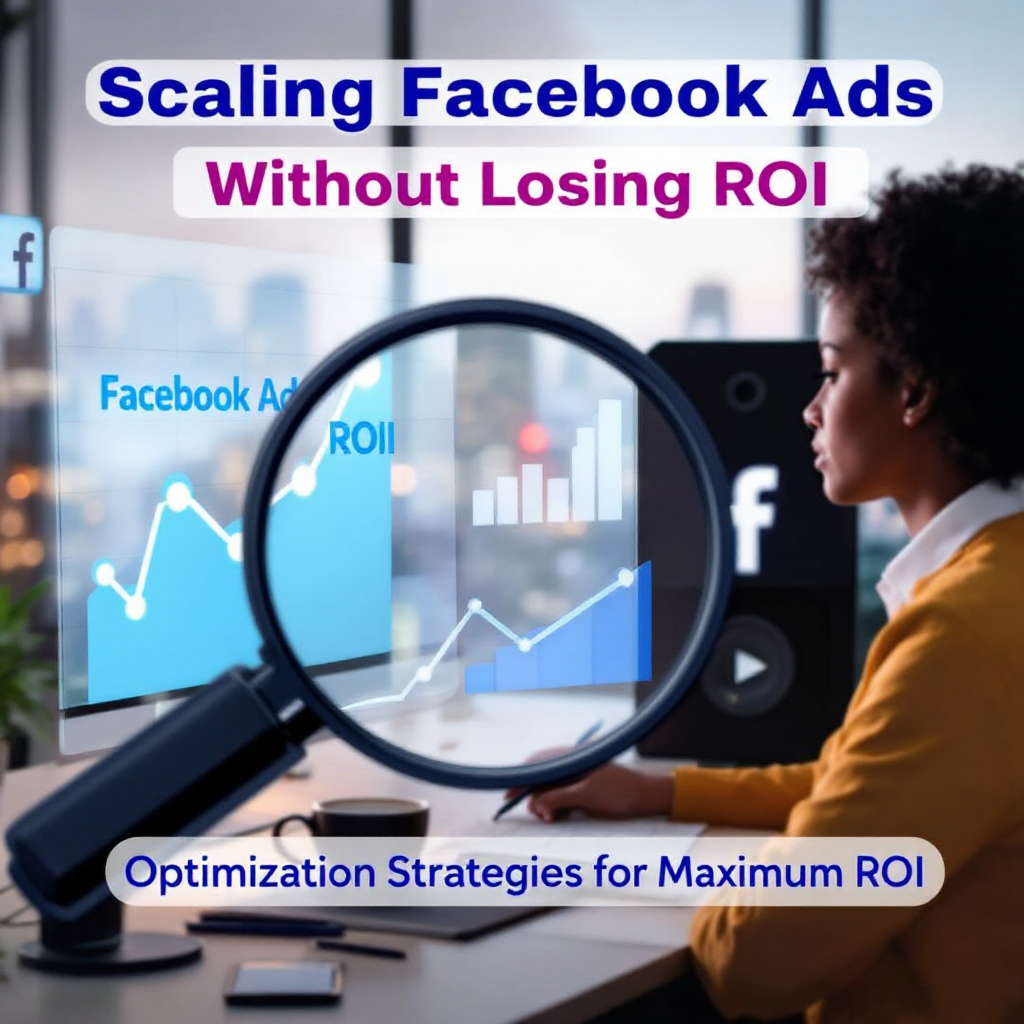Scaling Facebook Ads can be challenging. Many advertisers experience increased costs and reduced returns when they try to expand their campaigns. However, with the right strategies, you can scale effectively while maintaining a strong Return on Investment (ROI).
In this guide, we’ll explore the best practices for scaling Facebook Ads while keeping costs under control.
1. Understand When to Scale
Before scaling, ensure your campaign is already profitable. Expanding an unoptimized campaign will only increase your losses.
📌 Signs That Your Campaign Is Ready to Scale:
- Your Cost Per Result (CPR) is stable or decreasing.
- Your Return on Ad Spend (ROAS) is at least 2x or higher.
- Your ad engagement rate is high, and the frequency is below 3.
- Your audience size allows for further scaling without exhaustion.
If your campaign meets these criteria, you’re ready to scale.
2. Choose Between Horizontal and Vertical Scaling
There are two main ways to scale Facebook Ads:
- Vertical Scaling – Increasing your budget on a winning ad.
- Horizontal Scaling – Expanding your audience and testing new variations.
When to Use Vertical Scaling
Vertical scaling is useful when your current audience is performing well, and you simply want to increase the budget while maintaining efficiency.
🎯 Best Practices for Vertical Scaling:
- Increase budget gradually – Raise by 20-30% every 3-5 days to avoid disrupting Facebook’s learning phase.
- Monitor frequency – If your ad is shown too often to the same people, performance may drop.
- Refresh creatives – Avoid ad fatigue by updating visuals and copy.
When to Use Horizontal Scaling
Horizontal scaling works best when you need to expand your audience or test new strategies.
🔹 Ways to Scale Horizontally:
- Use Lookalike Audiences (LLAs) – Target users similar to your best customers.
- Test new interests and behaviors – Expand beyond your original targeting.
- Try different ad placements – Use Instagram, Messenger, and Audience Network.
- Diversify ad creatives – Experiment with videos, carousels, and stories.
3. Test Lookalike Audiences for Expansion
Lookalike Audiences (LLAs) allow you to reach new potential customers who share characteristics with your existing audience.
🎯 How to Create High-Performing Lookalike Audiences:
- Use high-quality source data – The best LLAs come from purchasers, engaged users, or high-intent website visitors.
- Test different lookalike percentages – Start with 1% (closest match) and gradually expand to 5-10% if needed.
- Combine with interest targeting – Layer interests over LLAs to refine your audience.
4. Scale With Retargeting Campaigns
Retargeting helps you convert warm leads who have already interacted with your brand.
🔥 Best Retargeting Audiences:
- Website visitors who didn’t convert.
- People who watched at least 50% of your videos.
- Users who engaged with your social media content.
- Cart abandoners – People who added items to their cart but didn’t purchase.
💡 Pro Tip: Use Dynamic Ads to show personalized product recommendations based on user behavior.
5. Expand to New Ad Placements
Many advertisers only use Facebook Feeds, but adding more placements can increase reach and lower costs.
📍 Best Placements for Scaling:
- Instagram Stories & Reels – Great for younger audiences.
- Facebook Marketplace – Ideal for e-commerce.
- Audience Network – Extends your ads to external apps and websites.
- Messenger Ads – Useful for personalized offers.
Test different placements and track which ones deliver the best ROI.
6. Optimize Ad Creatives for Scaling
As you scale, your audience will see your ads more frequently, leading to ad fatigue. To prevent this, you need fresh creatives.
📌 Tips to Keep Ads Engaging While Scaling:
- Rotate new images, videos, and ad copy every 2-3 weeks.
- Use user-generated content (UGC) to add authenticity.
- Test different ad formats – carousels, slideshows, and interactive ads.
- Use A/B testing to compare performance.
7. Increase Budget With Automated Rules
Facebook allows you to automate budget increases based on performance metrics.
🔧 How to Use Automated Rules:
- Set a rule to increase the budget by 20% if ROAS is above a certain threshold (e.g., 3x).
- Set a rule to pause underperforming ads with high Cost Per Purchase (CPP).
- Use rules to turn off ads with a frequency above 4 to prevent burnout.
8. Use CBO (Campaign Budget Optimization) for Efficient Scaling
Facebook’s Campaign Budget Optimization (CBO) helps distribute budget dynamically across your best-performing ad sets.
📊 Why CBO Works for Scaling:
- Facebook automatically allocates budget to the best-performing ads.
- It reduces manual adjustments, saving time.
- Works well for large audiences (e.g., Lookalike Audiences).
💡 Pro Tip: Start with CBO at $50-$100 per day and adjust based on performance.
9. Scale Internationally for More Growth
If your domestic market is saturated, expanding to international markets can drive new growth.
🌎 Steps to Expand Internationally:
- Identify countries with high demand for your product/service.
- Use Facebook’s automatic language translation to localize ads.
- Adjust pricing and offers to fit new markets.
10. Track Key Metrics to Ensure ROI While Scaling
Scaling is useless if it destroys your profitability. Monitor key performance metrics to ensure your campaigns remain cost-effective.
📊 Metrics to Watch:
- Cost Per Acquisition (CPA) – Ensure it doesn’t rise too much.
- ROAS (Return on Ad Spend) – Aim for at least 2-3x returns.
- Ad Frequency – Keep below 3-4 to avoid ad fatigue.
- Click-Through Rate (CTR) – A high CTR indicates strong engagement.
If performance drops, pause underperforming ads and test new strategies.
Final Thoughts
Scaling Facebook Ads without losing ROI is all about smart growth strategies. By gradually increasing budgets, optimizing targeting, refreshing creatives, and testing new placements, you can expand your reach while maintaining profitability.
Start applying these strategies today and watch your Facebook Ads scale profitably! 🚀
